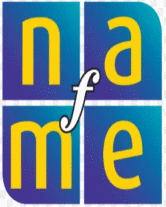Strategies for Making Music Happen
Once students have acquired basic musical knowledge and skills, how do they move from playing the part to playing in an ensemble? How do they shift from singing or playing notes to being able to perform with musical expressiveness and understanding? How do they develop the skills and confidence necessary to improvise and compose? In-depth musical skills, understandings, and expressiveness come from personal ownership of the tools necessary to think musically. Ownership of these tools comes when students practice and wrestle with musical ideas, concepts, skills, and problems. Saying "Because I'm the conductor (teacher) and I said to do it this way" doesn't lead to the development of independent musicians or independent musical thinking.
There are many thinking skills necessary for musical independence. The following represent only a few of the possible categories. More than one thinking skill may be used in a given illustration. These examples are meant to prompt you to think of more ways to encourage independent thinking during music instruction.
Compare and Contrast
- Play two recordings of the same selection. (One recording may be of a performance by your own students.) Ask the students to find similarities and differences in style, rhythms, expressive interpretation, and so on.
- Watch short selections of videos of two bands, orchestras, or choruses. Invite the class to list ways the groups were alike and ways they were different.
- Listen to recordings of Pavarotti and Domingo singing the same aria. How are they alike and how are they different?
- Ask two groups of students to create pentatonic accompaniments for a song the class knows. Ask the entire class to discuss how the two accompaniments were alike and how they were different.
- Ask students to describe how the chromatic scale is different from the diatonic scale.
- Ask the inside-stand players of the orchestra to perform a section of the music being rehearsed. Ask the outside-stand students to play the same section. Ask the remainder of the orchestra to describe how they were alike and how they were different.
- Have the students listen to Whitney Houston and Robert Merrill sing "The Star-Spangled Banner." Discuss the similarities and differences.
- Ask students, "How is a trumpet like a cornet? How is it different?"












